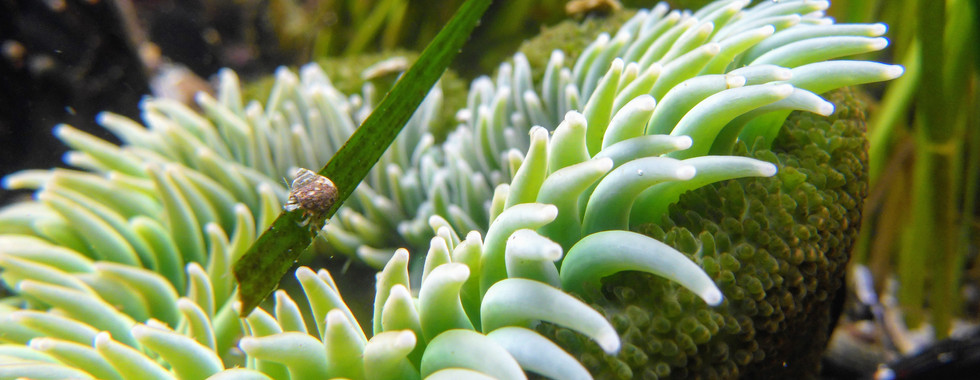For my long weekend stay in Port Angeles I had already accepted that I wouldn't get to do any tide pooling. The lowest tide for my stay was predicted at just under 4', a height that I would not normally bother with. I packed my underwater camera hopeful that I might stumble across a floating dock. Still, I was intent on visiting Tongue Point Marine Sanctuary as I had seen some amazing images from my fellow tide-pooling Instagramers- the scenery alone would be worth the visit. After a quick morning hike I headed over to Salt Creek Recreation area.

I got pretty excited when I saw this sign on my way to the beach. It was a good sign. I checked my tide prediction app. The low tide of the day, -3.7', would be coming up in just under an hour. I headed down.
I was amazed to find that this not-so-low tide was sufficient to reveal a multitude of tide pools! I would have much time. The landscape looked unforgiving for those who linger too long as the tides rise. I had my underwater camera along. This proved to be the perfect testing ground as the groves in the rocks allowed for an abundance of giant green anemones to remain in a substantial depth of water. Massive clusters of gooseneck barnacles, mussels and aggregating anemones dominated the shoreline. Navigating around the rocks was fairly easy but the further north I traveled the more challenging I found picking out a route that avoided crushing anemones.
The underwater camera, a Panasonic DC TS7, performed admirably. The pools were still and that helped get clear shots. The water quality was excellent. It is a little tricky getting the hang of shooting your subject without looking at the angle you are capturing. There is a lot of guesswork involved in this type of underwater photography. I spent a significant amount of time shooting the giant green and aggregating anemones.
After reaching an impassible amount of aggregating anemones I headed back along the beach, up the stairs and across to the actual "tongue" point for which the beach was named. This part was a bit more treacherous than the original beach and I did not have long before the tide reversed. I wondered out onto the point and watched a flock of black oystercatchers forage upon the shore. The anemones were far less abundant on this side and much trickier to photograph as the waves began to crash in.
I did not have long before the rocky outcropping would be submerged. I headed back up the steps to the bluff. It was an amazing spectacle for such a weak low tide! This would be a great spot to visit over the winter when there are not strong low tides. I can't imagine how spectacular this location is during a real low tide, certainly worth the three hour drive from Seattle!











































Comments